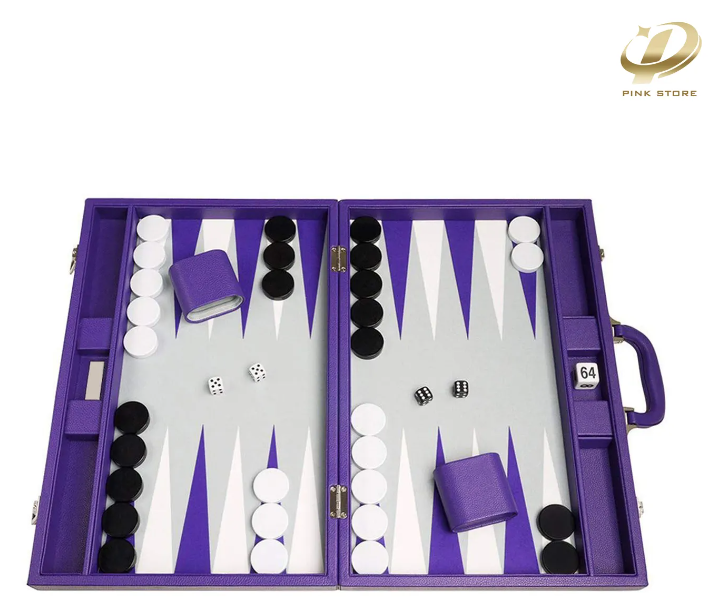
Get A Quote
How Does the Beaver Rule Work in Backgammon?
In this blog post, we will delve into the fascinating world of the Beaver Rule in backgammon. We'll start by exploring the origins of this intriguing rule, shedding light on how it came to be and why it has become a popular addition to informal games and friendly matches. Then, we'll break down the mechanics of the Beaver Rule, explaining how it works and when it comes into play during a backgammon match. Finally, we'll discuss strategic considerations for utilizing the Beaver Rule effectively, offering insights into when and how players can leverage this rule to their advantage on the board. So, let's dive in and unravel the mysteries of the Beaver Rule in backgammon!
Origins of the Beaver Rule
Historical Context: Evolution of Backgammon Rules
To understand the Beaver Rule's origins, we must first delve into the rich history of backgammon. Originating over 5,000 years ago, backgammon has evolved through various cultures and civilizations, each leaving its mark on the game's rules and mechanics. Over time, players have introduced optional rules to spice up gameplay and add complexity to strategic decision-making.
Emergence of Optional Rules like the Beaver Rule
The Beaver Rule is a product of this ongoing evolution of backgammon rules. While not part of the standard rule set, it has gained popularity among players seeking to inject excitement and unpredictability into their matches. Emerging from the backgammon community, the Beaver Rule reflects the creativity and innovation of players eager to explore new avenues within the game.
Speculation on the Origin of the Term "Beaver" in Backgammon
The term "beaver" in the context of backgammon likely stems from the imagery of a beaver biting back, symbolizing a player's countermove against their opponent's doubling attempt. While the exact origin remains speculative, it embodies the spirit of the rule itself – a bold and unexpected maneuver designed to shift the tide of the game in one's favor. As with many aspects of backgammon, the term's origins add to the game's mystique and allure, inviting players to engage in spirited debates and speculation.
Mechanics of the Beaver Rule
Description of the Beaver Rule in Backgammon
The Beaver Rule introduces a fascinating twist to standard backgammon gameplay. When a player is doubled in a game, instead of simply accepting the double and conceding defeat, they have the option to "beaver." This means they can immediately redouble the cube to a higher level, catching their opponent off-guard and potentially turning the tables on the game's outcome.
Triggering Conditions: When Does the Beaver Rule Come into Play?
The Beaver Rule comes into play when one player doubles their opponent, offering them the opportunity to increase the stakes and assert their confidence in their position on the board. It typically occurs in situations where the doubled player believes they have a favorable position or roll distribution and can withstand the increased pressure of higher stakes.
Decision-making Process: Options for the Doubled Player and the Original Doubler
Upon being doubled, the doubled player faces a crucial decision: to accept the double and play at the increased stakes or to exercise the Beaver Rule and redouble the cube. Conversely, the original doubler must decide whether to accept or decline the beaver. This decision-making process adds a strategic element to the game, as players must weigh the risks and rewards of their choices based on their assessment of the game state and their opponent's skill level.
Examples of Implementing the Beaver Rule in Backgammon Games
To illustrate the mechanics of the Beaver Rule, let's consider a hypothetical scenario. Player A doubles Player B, offering to increase the stakes of the game. Instead of accepting the double, Player B exercises the Beaver Rule and immediately redoubles the cube, surprising Player A. Player A now faces the decision of whether to accept or decline the beaver, knowing that their opponent is confident in their position on the board. This example highlights the strategic complexity and excitement that the Beaver Rule brings to backgammon games.
Strategic Considerations for Utilizing the Beaver Rule
Risk versus Reward
Implementing the Beaver Rule in backgammon requires careful consideration of the potential risks and rewards involved. While exercising the Beaver Rule can catch opponents off-guard and provide an opportunity to seize control of the game, it also carries the risk of escalating the stakes and facing a larger loss if the player's position deteriorates. Players must assess their position on the board, their opponent's skill level, and their own risk tolerance before deciding whether to employ the Beaver Rule.
Factors Influencing the Decision to Implement the Beaver Rule
Several factors influence a player's decision to utilize the Beaver Rule in a backgammon match. These include the player's confidence in their position on the board, the current game state, the opponent's doubling strategy, and the player's long-term game plan. Successful implementation of the Beaver Rule requires astute judgment and a keen understanding of these factors to maximize its strategic benefits while minimizing potential drawbacks.
Conclusion
The Beaver Rule in backgammon serves as an intriguing optional rule that adds depth and excitement to the game, allowing players to exercise strategic prowess and adaptability. By understanding its mechanics and strategic considerations, players can leverage the Beaver Rule to their advantage and elevate their gameplay experience.
For backgammon enthusiasts looking to enhance their gaming experience, PinkStore offers a comprehensive storage solution. Our chessboard game storage solutions are designed to keep your games orderly, easily accessible, and safeguarded from damage. PinkStore's products are ideal for game stores, toy shops, and other retailers looking to expand their inventory. With our customizable options, you can create personalized solutions that meet your business needs, ensuring a seamless and efficient storage solution for your game collection. Experience the convenience and reliability of PinkStore storage solutions today to enhance your gaming experience!


